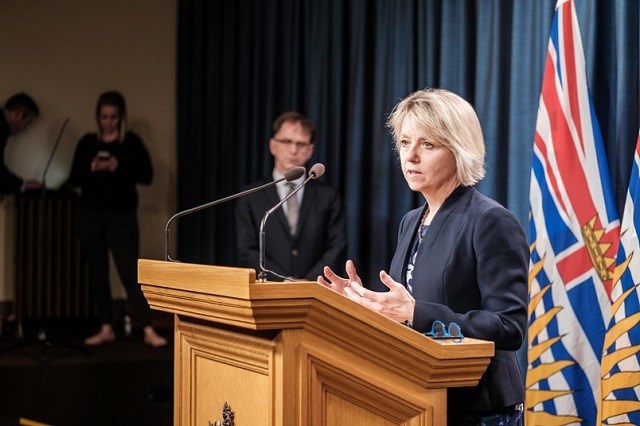As a result of physical distancing measures and travel restrictions, B.C. appears to be “flattening the curve” of COVID-19 infections, but continued efforts are needed to make sure B.C.'s healthcare system can handle the influx of new patients.
How B.C.'s healthcare system is able to handle the COVID-19 pandemic will largely depend on how the province's rate of infection grows over the next eight days.
Today (March 27), Provincial Health Officer Dr. Bonnie Henry and Deputy Minister of Health Stephen Brown provided some insight into what the future of the COVID-19 crisis might look like in B.C., based on modelling from South Korea, China's Hubei province and Northern Italy.
With more than 86,000 total cases in Italy, the Provincial Critical Care Working Group used Northern Italy as a worst case scenario for the province in their modelling. Dr. Henry said at she's “cautiously optimistic” though that B.C. is more closely following the COVID-19 growth rate of South Korea, which was used as the best case scenario.
Dr. Henry said due in a large part to travel restrictions and physical distancing measures taken over the past 13 days, B.C. has seen a reduction in the rate of growth of confirmed cases, from 24 percent average growth to 12.
B.C. hit 100 confirmed cases of COVID-19 21 days ago. In their modelling, the province used Day 29 from the 100 case mark as the expected peak of hospitalizations, which will fall on April 4.
Based on the “likely scenario” of below, or at the Hubei epidemic level, B.C. will see 571 COVID-19 hospitalizations by that day, with 105 of those hospitalizations in the Interior Health region.
Until demand exceeds the capacity, B.C. is treating COVID-19 patients at 17 of the largest hospitals in the province, referred to as “primary COVID sites,” before moving patients to smaller facilities.
At that “likely scenario,” B.C. would require an additional 133 ICU beds outside of those primary COVID sites, with 12 of those required beds coming from the Interior Health region. Beds in areas like high-acuity units, cardiac surgery ICU, coronary care units and post- anaesthesia rooms will be used in addition to ICU beds as required.
B.C should have more than enough ventilators province-wide following the Hubei model, although Interior Health, where there's a larger older population, may require additional ventilators from other regions. B.C. is currently ready to deploy an additional 72 ventilators to hospitals that require them, and more are expected to come in by next week.
In the “absolute extreme case” of following Northern Italy's path, Deputy Minister of Health Stephen Brown said B.C.'s healthcare system would be able to provide beds and ventilators to patients, although the system would be near maximum capacity.
 (via BC Government)
(via BC Government)
(via BC Government)

(via BC Government)



